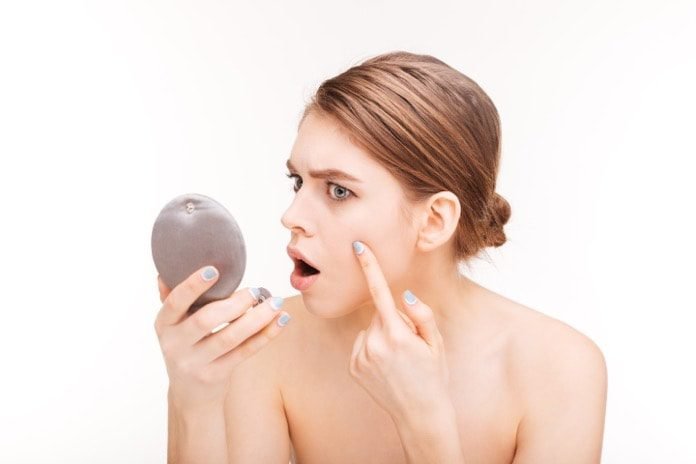Acne light therapy is rising in popularity as a successful treatment method for acne. Researchers in Singapore and the UK recently investigated the clinical evidence of the effectiveness of acne light therapy.
Acne is a highly prevalent condition, present in almost 95% of the population. Hormones and the immune system are the major culprits of this inflammatory disease. Acne is especially common in adolescence and can have social and psychological impacts. Acne light therapy is one treatment that is rising in popularity.
Acne light therapy
This treatment is usually done as a photodynamic therapy (PDT), which uses light and a drug that is activated by that particular type of light. The theory behind it is that the light penetrates through the skin to “zap” acne at its source. It is theorized to kill the acne-causing bacteria Propionibacterium acnes, thereby reducing inflammation and oil glands.
The most popular types of light used in acne light therapy are blue and red, which exists within the visible light spectrum. The difference between the two is their wavelength. Blue light has a shorter wavelength while red light has a longer wavelength. The wavelength determines how deep the light penetrates the skin layers. Blue light is known to kill P. acnes and red light penetrates deeper into the skin where it reduces inflammation and oil glands.
Inconsistency in studies of acne light therapy
A recent study was published in the journal article JAMA Dermatology, analyzing 71 studies assessing this treatment. They focused on methyl aminolevulinate-photodynamic therapy (MAL-PDT), as it had slightly more evidence on its effectiveness compared to other therapies. The researchers observed from a previous review article the lack of clinical evidence for the effectiveness of other acne light therapies. Out of the 71 studies the researchers looked at for MAL-PDT, only five were similar enough in its approach for the results to be comparable. These studies showed a slightly advantageous effect of MAL cream plus red light on acne compared to placebo or no treatment at six or 12 weeks of treatment. None of the changes were clinically significant.
The authors criticized the inconsistency in the scientific community for these studies. The methods, sample size, measurements, and calculations differed drastically from study to study, making it very difficult to compare or give supporting evidence. Furthermore, the authors suggested longer follow-up periods in the study to see long-term effects of acne light therapy. More investigation is needed on the biological mechanism of photodynamic therapy.
Acne light therapy not recommended
In summary, there is no definite clinical evidence for acne light therapy as an effective treatment for acne. Based on the findings, this therapy for acne was not recommended by the researchers. This may change, however, when the scientific community produces more standardized methods of conducting studies related to this treatment.
Written by Alena Kim, HBSc
References:
(1) Posadzki, P., & Car, J. (2018). Light Therapies for Acne. JAMA Dermatology, 3–5. http://doi.org/10.1001/jamadermatol.2018.0110
(2) Pei, S., Inamadar, A. C., Adya, K. A., & Tsoukas, M. M. (2015). Light-based therapies in acne treatment. Indian Dermatology Online Journal, 6(3), 145–157. http://doi.org/10.4103/2229-5178.156379



